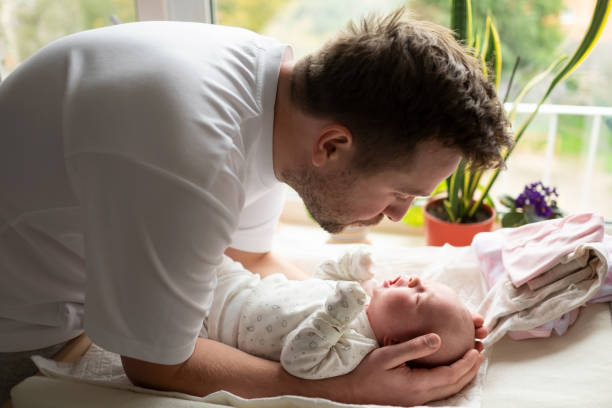It happens in silence. No fanfare. No fireworks.
You have a thought—a simple one. Maybe it’s hope. Maybe it’s doubt. Maybe it’s a fear you’ve had a thousand times or a whisper of encouragement that appears unexpectedly in your mind. You barely notice it. But deep in the folds of your brain, something extraordinary happens.
A neuron fires.
Then another. And another.
And if you think that thought again—if you repeat it tomorrow, if it lingers while you brush your teeth or walk to work—those neurons begin to wire together. A pattern forms. A pathway emerges. Your brain, quite literally, begins to change.
This is not metaphor. This is neuroscience.
Your thoughts shape your brain. Not in an abstract way. Not in a philosophical sense. But physically, chemically, electrically.
This is the unseen power of belief.
The Myth of a Static Brain
For centuries, science saw the brain as fixed. A hardwired machine. At birth, it was believed, you were given all the neurons you’d ever have. Your personality, intelligence, potential—they were predetermined. Set in stone. Immutable.
This idea was comforting to some. It made success seem noble. And failure, inevitable.
But in the late 20th century, a quiet scientific revolution began to unravel that myth. Researchers discovered something astonishing: the brain could change itself. Not just in childhood, but in adulthood. Not just through injury, but through thought.
This concept is called neuroplasticity. And it means that everything you think, feel, do, and believe is reshaping the architecture of your brain in real time.
You are not a passenger in your brain. You are the sculptor.
The Belief That Healed a Hand
Consider the case of stroke patients who lost use of a limb. For decades, conventional wisdom insisted that the damaged part of the brain could not recover. But in the 1990s, groundbreaking experiments challenged that assumption.
In one study, patients with paralyzed hands were asked to imagine moving them—just imagine. No actual movement was possible. Yet after weeks of mental rehearsal, something strange happened. Not only did the parts of the brain associated with hand movement begin to activate—but in some cases, patients regained partial use of their limbs.
Their belief, paired with mental focus, had awakened dormant neural circuits.
It was a stunning revelation. The brain was not a static machine. It was clay. It could be shaped by thought, molded by intention.
Belief was not just psychological. It was biological.
The Placebo Effect: Faith in Action
The placebo effect is often dismissed as trickery. A sugar pill. A fake treatment. A patient who “imagines” they’re better.
But what if that imagination is the medicine?
Study after study has shown that belief alone can trigger physical healing. People given inert substances—pills with no active ingredients—often show improvement simply because they believe they’re being treated. In some cases, placebo treatments rival the effects of real drugs.
Pain decreases. Depression lifts. Symptoms subside.
Brain scans reveal that belief in treatment triggers real neurochemical changes—endorphins release, dopamine surges, regions associated with healing light up.
The placebo effect isn’t fake. It’s the body responding to the mind’s conviction.
What we believe about our bodies influences how they function. What we believe about our limits alters how far we can go. What we believe about our pain changes how we feel it.
Belief is biology.
The Inner Voice That Builds or Breaks You
Some beliefs are loud. “I’m not good enough.” “I’ll never be happy.” “Nothing ever works out for me.”
Others are quiet. “Maybe I can.” “This might be possible.” “I’m not broken.”
But all of them are architects.
Repeated thoughts lay down neural scaffolding. Over time, those scaffolds become roads. Then highways. The more you use them, the easier it is to keep using them. This is known as Hebbian learning: neurons that fire together, wire together.
Think a thought once—it’s a whisper. Think it a thousand times—it’s a groove in your brain.
This is why self-talk matters. Not because it’s “positive thinking,” but because it determines which neural networks become dominant. Harsh inner voices strengthen the circuits of anxiety, self-doubt, and shame. Encouraging voices strengthen those of confidence, resilience, and hope.
You are not just listening to your inner voice. You are becoming it.
From Thought to Structure: The Brain’s Remodeling Crew
To understand how belief rewires the brain, we need to look at the machinery behind neuroplasticity.
Your brain is made up of about 86 billion neurons, each connected to thousands of others through synapses. When you learn something new or have a powerful emotional experience, these synapses fire. With repetition, they strengthen. New dendrites grow. Old ones shrink. Entire regions can reconfigure themselves to support new skills, habits, or identities.
For example, London taxi drivers—who must memorize thousands of streets—have larger hippocampi (the part of the brain involved in spatial memory) than the average person. Concert violinists show changes in motor cortex areas related to finger movement. Meditators show thickening in regions linked to attention and compassion.
This isn’t science fiction. This is observable, physical change. Thoughts don’t just vanish into the ether. They leave fingerprints.
And belief is the fuel that keeps this remodeling crew working.
The Brain in Love, Fear, and Faith
Our emotional states—especially those tied to strong beliefs—flood the brain with neurochemicals. Fear releases cortisol and narrows attention. Love releases oxytocin and expands trust. Faith, especially when practiced in community, boosts serotonin and calms the amygdala (the brain’s fear center).
When you believe you are loved, your brain lights up in regions associated with safety and connection. When you believe you are in danger, your threat response activates, even if no real danger is present.
Belief doesn’t just shape the brain’s architecture—it shapes its chemistry.
This explains why trauma—essentially a belief imprinted through overwhelming experience—can rewire the brain toward hypervigilance and despair. And why healing—through new beliefs, experiences, and safe relationships—can undo that wiring.
You can’t always think your way out of trauma. But belief, practiced gently and consistently, opens the door.
Childhood Beliefs: The First Architects
Most of our core beliefs are formed early. Before we understand the world, we absorb it.
If you grew up being told you were smart, lovable, capable—you believed it. If you were told you were too much, not enough, unworthy—you believed that too.
These beliefs, often formed pre-verbally, live in the brain’s deepest wiring. They become the backdrop of adult life—the silent assumptions that shape every decision, every risk, every relationship.
The tragedy is that these beliefs often go unchallenged. They run like invisible software beneath our conscious awareness.
But neuroplasticity offers hope.
You can rewrite the script. You can choose new beliefs. And when you do, your brain follows.
Meditation, Affirmation, and the Rewiring of Thought
Modern neuroscience has validated what ancient wisdom long suspected: mindfulness changes the brain.
Studies show that consistent meditation alters brain structure. The prefrontal cortex (associated with decision-making) grows denser. The amygdala (fear and emotion) shrinks. The default mode network (linked to self-referential thought and rumination) quiets.
Why? Because meditation teaches the brain to observe thought without judgment—and, over time, to choose thoughts more consciously.
Affirmations, when used authentically, can reinforce new beliefs. Not as magic spells, but as repetition that reshapes synaptic pathways. Saying “I am worthy” once may feel hollow. Saying it a thousand times, with feeling and intention, becomes a new neural groove.
It’s not about tricking yourself.
It’s about teaching your brain a new truth.
The Body Keeps the Belief
Beliefs don’t just live in the mind. They echo in the body.
Someone who believes the world is unsafe may walk with tense shoulders, shallow breath, a tight jaw. Someone who believes they are loved moves differently—relaxed, open, grounded.
Your posture, tone of voice, and even immune function respond to your beliefs.
In fact, the immune system is heavily influenced by the brain. Studies show that positive beliefs correlate with faster recovery, lower inflammation, and better outcomes in chronic illness. Not because belief cures disease—but because it creates the conditions for healing.
When the brain feels safe, the body listens.
Belief and Performance: The Athlete’s Edge
Elite athletes don’t just train their bodies. They train their minds.
Visualization, mental rehearsal, and belief in outcome are standard tools in professional sports. Athletes who mentally practice their routines activate the same brain regions as those who physically perform them. And the results are measurable.
Olympians, martial artists, and high performers consistently report that belief is the differentiator. Not talent. Not luck. Not brute force.
Belief is what shows up when the body wants to quit. Belief is what pushes through the final seconds. Belief is what makes the difference between silver and gold.
Because the brain does not distinguish between real and vividly imagined experiences.
It responds to both.
Why Belief Alone Isn’t Enough—But It Is Essential
Let’s be clear: belief is not a cure-all. You cannot think your way out of every problem. You cannot meditate your way out of systemic injustice or reframe your way out of grief.
But belief is what determines whether you keep going.
Belief is the spark that ignites action. The voice that says, “Try again.” The hand on your back when everything else tells you to give up.
You don’t need to believe everything will be perfect.
You only need to believe that change is possible.
And that is enough.
The Rebirth of the Self
There’s a moment in every transformation—a quiet, trembling moment—when belief wavers. When doubt creeps in. When the old pathways feel louder than the new ones.
This is the moment that matters.
Not the big decisions. Not the grand declarations. But the small, ordinary, lonely moment when you choose to believe again. Not because you’re sure. But because you’re brave.
And when you do—when you hold that belief, however fragile—your brain responds.
A neuron fires. Then another.
And the architecture of who you are begins to shift.
Again.






